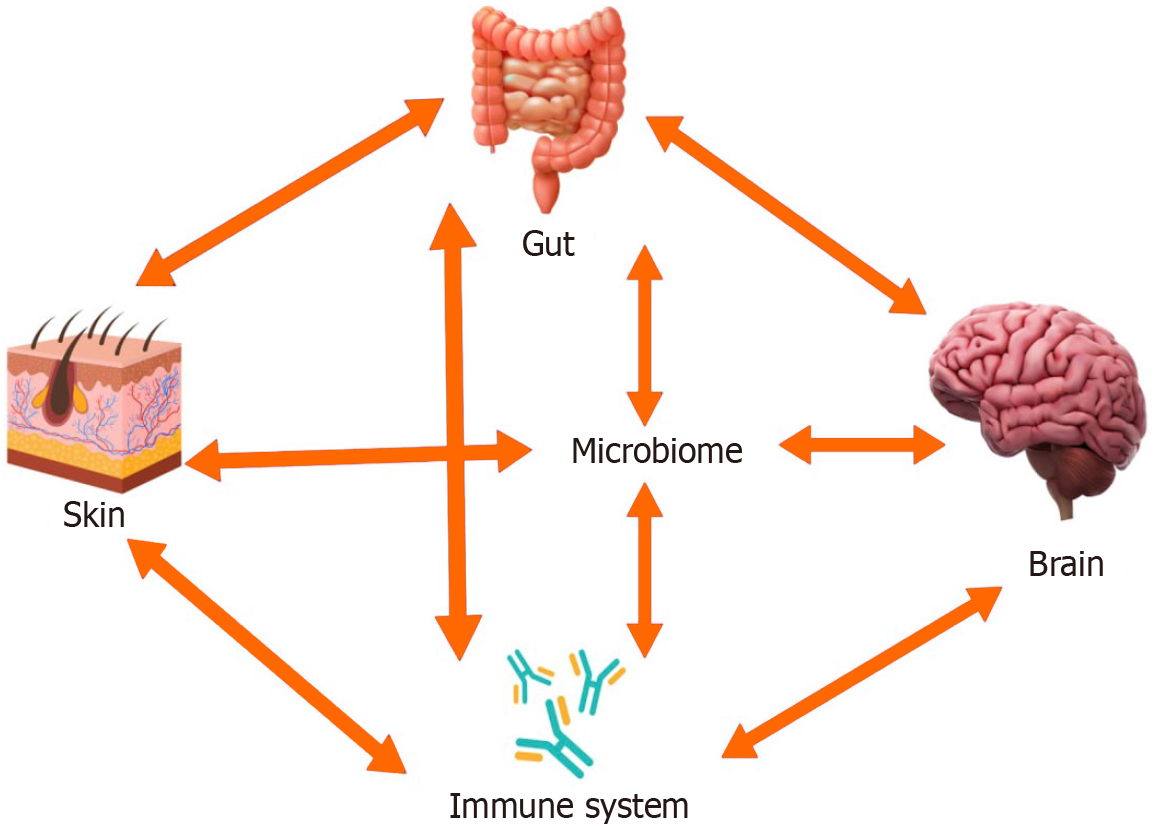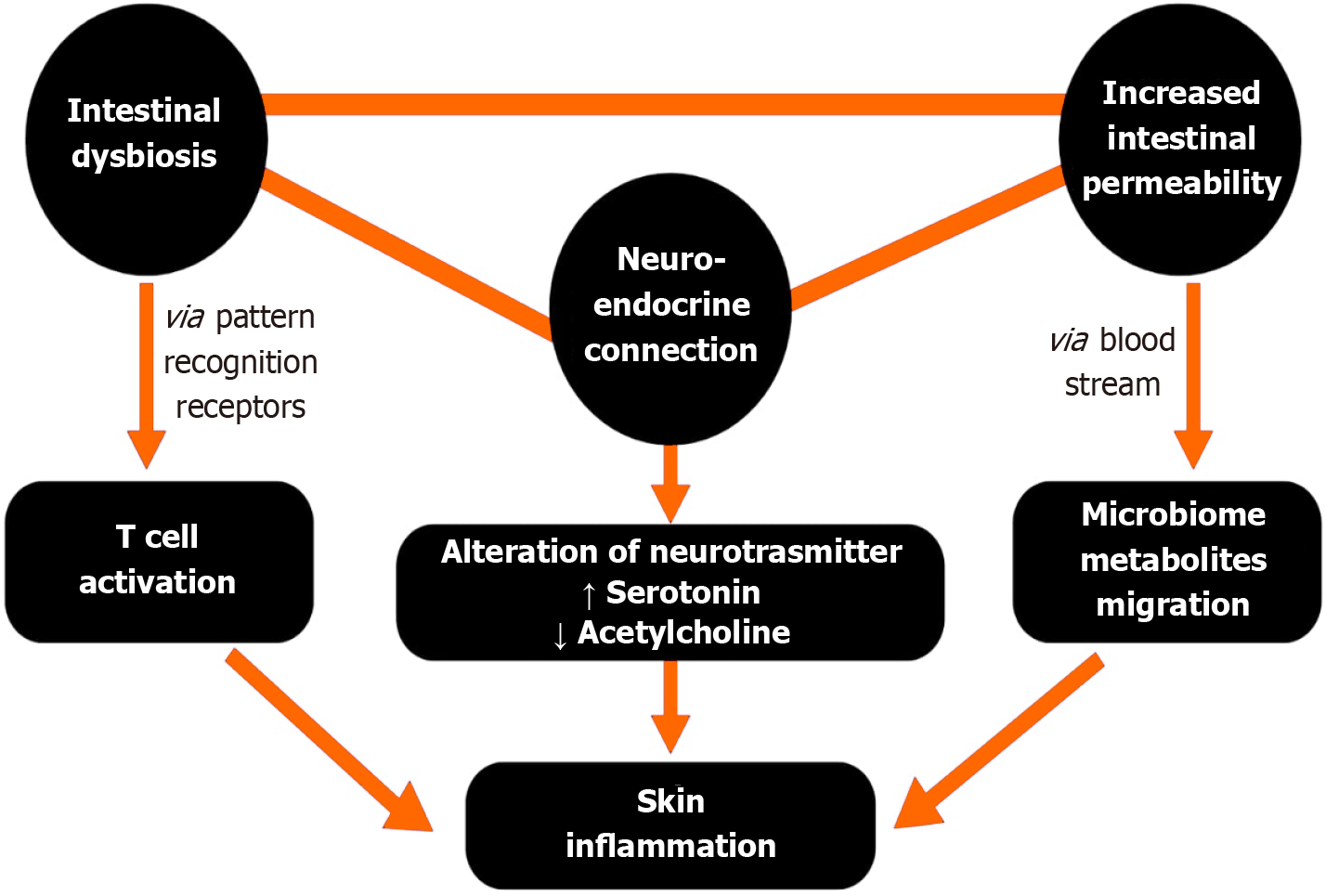Copyright
©The Author(s) 2025.
World J Gastrointest Pathophysiol. Sep 22, 2025; 16(3): 108952
Published online Sep 22, 2025. doi: 10.4291/wjgp.v16.i3.108952
Published online Sep 22, 2025. doi: 10.4291/wjgp.v16.i3.108952
Figure 1 Gut-skin axis as part of the broader skin-gut-brain-immune system axis.
The skin, gut, brain, and immune system are intricately inter
Figure 2 Mechanism of gut-skin axis.
Intestinal dysbiosis, increased gut permeability, and the neuro-endocrine axis are the three central mechanisms linking the gut and skin. Dysbiosis activates T cells through pattern recognition receptors, while increased intestinal permeability facilitates the translocation of microbial metabolites. Additionally, neurotransmitter imbalances—characterized by elevated serotonin and reduced acetylcholine—further contribute to the disruption. These combined factors—T cell activation, altered neurotransmission, and circulating microbial metabolites—ultimately drive skin inflammation.
- Citation: Singla N, Singla K, Attauabi M, Aggarwal D. Gut-skin axis: Emerging insights for gastroenterologists-a narrative review. World J Gastrointest Pathophysiol 2025; 16(3): 108952
- URL: https://www.wjgnet.com/2150-5330/full/v16/i3/108952.htm
- DOI: https://dx.doi.org/10.4291/wjgp.v16.i3.108952














